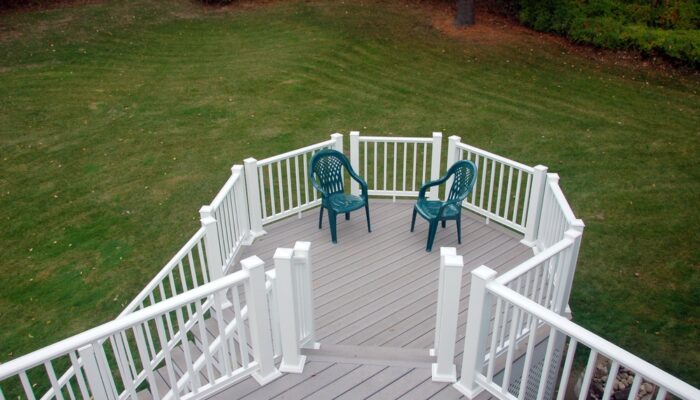4 Things To Know About Composite Decking

4 things to know about composite decking
Composite decking has grown in popularity over the past few years. More and more people are adopting it for their decks, especially because of its eco-friendly nature. These boards are made from recycled plastic or wasted wood from factories. If you are looking to install composite decks too, here are a few things that you must be aware of.
Which are the different types of boards used for composite decking?
- Two-faced : One of cheaper types of composite decking boards available, this type is sold by brands like Veranda ® and is available at The Home Depot™. One side of this board has a wood-grain look, while the other side is brushed. It follows a slotted profile for installation and is priced at about $4.50 per square foot.
- Plastic-wrapped : This type of composite decking boards is wrapped with proprietary resin, giving it an excellent finish along with protection from stains, fading, and scratches. This resin covers both sides of the board for higher durability. It follows a slotted profile of installation too and is priced at around $5.80 per square foot.
- All-plastic : These boards are alternatives to composite boards. They are made from 99 percent virgin PVC plastic and look remarkably similar to composite boards. This material is harder than polyethylene and does not scratch easily either. It has a wood fiber mix as well, which makes it safe from food stains.
Which are the different qualities of materials used for composite decking boards?
- Basic : The basic quality of boards for composite decking are not evenly shaped and are deep-grained. They are 5 inches in width which is half an inch narrower than other better-quality boards. The colors for these boards are limited to red, brown, and grey. There are ridges on the underside, which makes only one side usable.
- Mid-range : This board has a slightly better finish than the basic variant of composite decking boards, and also has two usable sides. You have the option to choose from four different colors. Meanwhile, the width of these boards is 5½ half inches, which is ideal for composite decking boards.
- Premium : For the premium boards, streaks of different-colored pigments are added to their mix so that they closely replicate tropical hardwoods. Their boards are exceptionally well-finished and have minimal texture on the surface. The key is that even with a smooth surface, these boards are slip-resistant. Their price ranges from $5.90 to $6.50 per square foot approximately.
Which are some of the important profiles for composite decking?
- Slotted : This type comes with grooves on both sides of the board, which accept the hidden fasteners of every manufacturer. It is also the most preferred type of profile for composite decking. The prices for these profiles start from about $4.60 per square foot.
- Solid : These boards are thick and do not have any slots, perforations or sections to help in an easy fitting. However, this increases the flexibility of the installation process. The board can be face-fastened or edge-fastened, and it also has two usable sides. The prices start at around $4.60 per square foot.
- Open flange : This type of board allows you to reduce the weight of the entire deck, but it also takes a toll on its stability. It only uses fasteners that are hidden, giving the deck a close finish. The prices start at around $5.90 per square foot.
What are the important factors for the installation of composite decking?
- Joist spacing: The spacing of the joist is one of the most critical factors for the deck’s foundation. If the joists are spaced wider than 16 inches from the center, there is a high possibility that the composites will sag. Face-fastening too close to the edge must be avoided. It is ideal to keep the screws ¾ inch away from the edges and ends.
- Edge spacing: Narrow gaps between the boards can get clogged easily, raising the risk of stains, mildew as well as waterlogging. 16d nails are an ideal fit for setting the between-board spacing.





